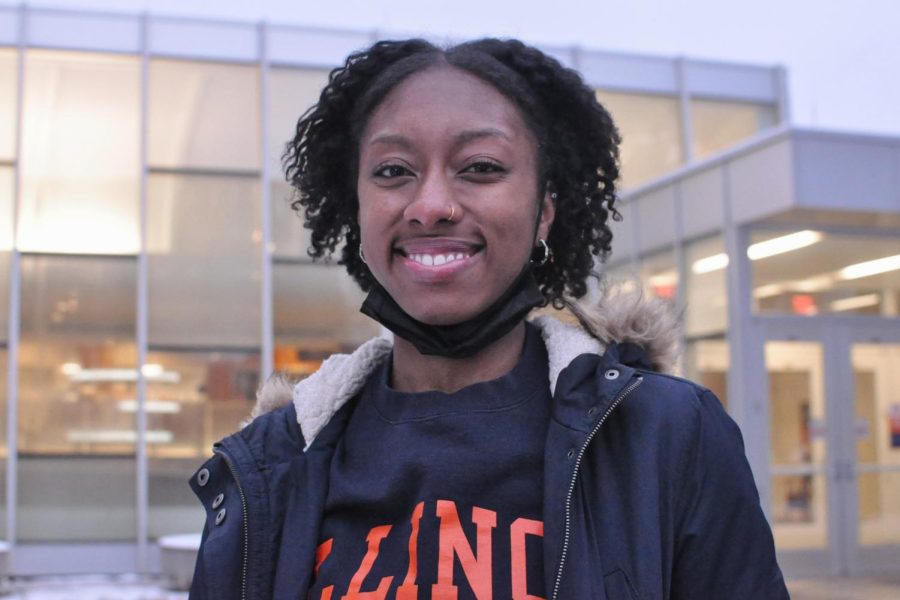Black students call for more UI investment in diverse residence halls
Nia Patterson, sophomore in LAS, talks about her experience living in PAR compared to the Ikenberry Commons when it comes diversity. With PAR having more residents identifying as African American.
Feb 25, 2022
As a Black student who attended a majority-Black high school, Nia Patterson, sophomore in LAS, said she knew her experience at a predominantly white institution would be different.
Patterson and her roommate decided to live at Weston in Ikenberry Commons for their freshman year. There, she said she was hoping to meet people of different backgrounds.
She said two white neighbors avoided her and her roommate and would hurry to get back in their rooms if they saw Patterson and her roommate in the hallway.
Patterson said the experience was hurtful, and it often felt like she had to go above and beyond to prove that she was not mean or aggressive.
“We tried our best to just be friendly and try to speak in the hallway to people,” Patterson said. “But at a point in time, it kind of felt like we were overexerting our niceness.”
Get The Daily Illini in your inbox!
Patterson said that although she was upset, she tried to remember that many people who haven’t had experiences with different racial groups may have misconceptions.
In 2020, University data showed that over 16% of FAR residents and over 12% of PAR residents identified as African American.
Despite breaking an enrollment record in 2021, Black student enrollment decreased from 8.7% in 2019 to 6.9% in 2021.
As residence halls with a larger number of Black residents, Patterson, a resident at PAR, said there is a stronger focus on the needs of minority students at PAR and FAR than at Ikenberry Commons.
“It’s definitely like a big shift,” Patterson said. “I feel like more of an effort is made over here, but naturally because more Black students stay here.”
Aniyha Jones, junior in Business, said she always tells Black students to choose to live at PAR or FAR because she lived there as a freshman. There, Jones said she was surrounded by other Black students she felt comfortable around.
“I think everybody just knew this is where the Black freshmen typically stay,” Jones said. “For me, I wanted to be in the social scene where all of my peers are.”
Both Jones and Patterson agreed that Black students often choose to live at PAR or FAR because of word of mouth. Currently, the University allows students to choose where they want to live on campus.
“University Housing does not collect or store race/ethnicity data in our assignments database,” said University Housing spokesperson Mari Anne Brocker Curry in an email. “Currently, our students choose their own space in our system from available spaces.”
But Jones said her housing experience at the University wasn’t all positive.
From public showers and a lack of study spaces and elevators in many areas throughout the residence halls, both Jones and Patterson said they’d like to see FAR and PAR get renovated in the future.
“If ISR can get renovations, there’s no reason PAR and FAR can’t,” Jones said. “Show everybody a good time.”
If students are paying large amounts of money to stay in residence halls on campus, Patterson said they should be getting the best out of their home.
“I think that the University may have gotten comfortable with PAR and FAR just being the older dorms (and) saying that these students are gonna live here anyway,” Patterson said. “But I think that part of that experience should be living comfortably and not feeling like well, ‘I pay all this money to be here but I’m getting the bare minimum out of my dorm.’”
When she was a freshman, a noose – a historically racist symbol – was found in Allen Hall.
Jones said many of her friends were resident advisers when the noose was found, and they said they were told not to say anything. But Jones said the incident was extremely disheartening and emotional for the Black community on campus.
“Imagine being an African American resident adviser and you’re put in a position of trying to do your job, but feeling like your superiors don’t really understand the severity of the situation,” Jones said.
Despite the issues that she encountered along the way, Jones said she wouldn’t have wanted to live anywhere else on campus.
By being surrounded by other Black students, Jones said she was able to feel safe at the residence halls. She said this was especially important when she was often one of the only Black students in many of her classes.
“That was the community I needed and I don’t think that I will have as many connections or relationships without being around those people every day,” Jones said.






